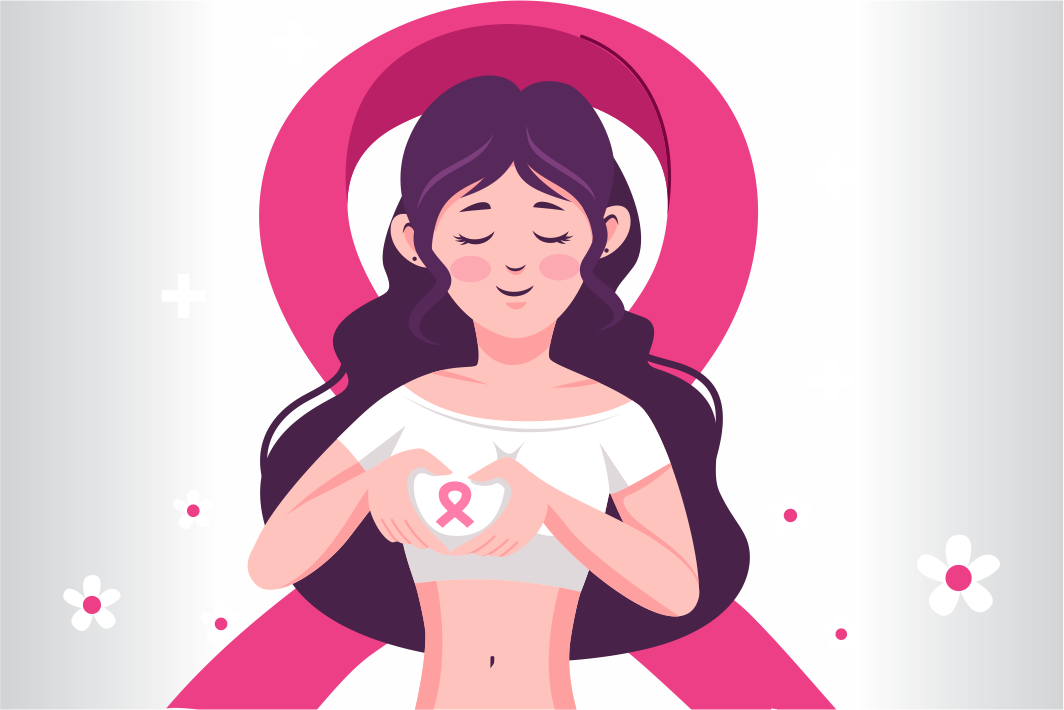There
seems to be no end to the cancer menace. Breast cancer, a common form of
cancer, is on the rise among women. Breast cancer has a stigma and fear factor
attached to it and no one wants to discuss it in the open. The ground report
tells a sordid tale. Many women in rural areas succumb to breast cancer due to
late detection.
An open
society across the metros in India makes it easier to share breast cancer
awareness. Rural areas lack essential awareness, and many shy away from talking
about breast cancer.
Not only
women but men also have breast cancer. Yet, the ratio of men suffering from the
disease is low compared to women. According to WHO estimates, 0.5 to 1 percent
of men have cancer.
The
causes
A major
health crisis and a silent threat, breast cancer is wreaking havoc among the
masses.
Causes
are manifold for breast cancer to progress. A lifestyle disorder, family
history, and hormonal changes lead to breast cancer.
Genes
play a role in breast cancer propagation. Mutations in BRCA1, BRCA2, or CHEK2
genes increase the risk. The risk increases with age, especially in the case of
women—post-menopausal women up the ante.
Reproductive
history and women who cannot bear children are often in danger.
Hormonal
therapy, radiation exposure, consumption of alcohol, and smoking increase the
risk.
Overgrowth
of tissues in breasts, forming tumors, leads to cancer in the area. Common
types of invasive breast cancer are viz—ductal carcinoma, lobular carcinoma,
inflammatory breast cancer, Paget’s disease, phyllodes tumor, etc.
Symptoms
Cancer
can ensue when an infected person shows the following symptoms. One should keep
an eye on the formation of lumps, fluid in nipples, skin dimpling, and inverted
nipples—skins around the breast peel, scale with flakes appearing.
Males who
have breast cancer have similar symptoms. The percentage of males suffering
from the disease is negligible compared to females.
Treatment
Many
breast cancer patients undergo mastectomy. It is a procedure to remove a part
or entire breast through a surgical procedure. Treatment also includes
chemotherapy and radiotherapy.
In-vitro
diagnostic tests help identify specific therapeutic products with lower side
effects. Precision medicine is revolutionizing breast cancer care.
Immunotherapy
is another field that is helping breast cancer patients. Immunotherapy improves
drugs and is therapeutic to fight cancer. Cancer immunotherapy vaccines can aid
in breast cancer treatment.
Doctors
combine various treatment methods to reduce the chances of cancer getting
relapsed. Systemic drug therapy is also opted for.
A
well-balanced diet, limited movement, etc, can lead most people to return to
everyday life.
Follow-up
care is of utmost importance. Women with severe forms of cancer are constantly
under stress and fear of the cancer coming back. Continued treatment is the
only option.
Awareness
Much
information is being shared about the precautions to keep breast cancer at bay.
In rural setup, ASHA workers play an essential role in creating awareness of
breast cancer.
Early
detection holds the key to a better survival rate. Visiting oncologists will
help you understand the progression of the disease.
The
outbreak of cancer in any family leads to an emotional burden.
Outlook
Depression
and sadness set in on the very thought of visiting a cancer hospital. The high
cost of treatment is also a concern. Several treatment options are available.
Yet, unaffordable treatment costs deter many from continuing therapy in the
long run. Also, many move to cities for better treatment, leading to a
socio-economic burden.
Emotional
support aids in the speedy recovery of breast cancer patients.
The
survival rate for breast cancer patients looks promising. Thanks to
advancements in treatment procedures.
More awareness, affordable treatment, and better survival are the keys to survival.





